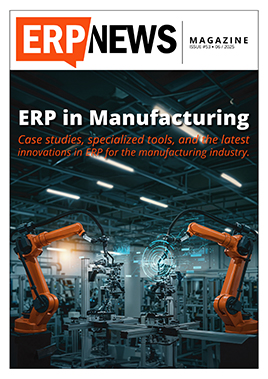Phil Nicholls, Managing Director at Medatech UK kicked off its user conference in a room full of customers. This is also the major UK convention for Priority ERP. In June the main Priority ERP conference was held in their home country Israel drawing more than 1,300 attendees. This event was smaller but is growing year on year as Priority start to make an impact in the UK market. They now have more than 100 customers in total, most of which are Medatech customers. It is a market that Efrat Nakibly, VP Marketing Priority described as: “This region continues to be a strategic focus for us. We also see it as a hub for other activity in Europe.”
Priority recently opened an office in Oxford and are recruiting to help with expansion in the UK. They are also looking for new partners in the region. This will not be an easy task with other vendors all fighting to win new business.
Medatech is the top business partner for Priority globally as well as the UK according to Nakibly. Nichols enforced this by saying: “We at Medatech deal with Priority that’s all we do.”. His view is that it is the best ERP on the market. Others might disagree but it does have comprehensive functionality and more than 8,000 customers, 1,600 of whom are using their SaaS solution. He added that he sees Priority as a leader in the ERP as it is an inventor and investor, rather than follower or stagnant product.

Complexity through flexibility
Every conference has a feel. This one was one of camaraderie with customers seeming to share business problems and solutions. It was one of the most vibrant break sessions I have seen with people talking in the auditorium before retiring for sustenance.
The attendees were from mixture of industries although many were high tech manufacturing companies. ET spoke to Nicholls later in the day and this is benefit of Priority. It has rich functionality and they have sold it into many industries. This could lead to a lack of focus but Nicholls answered that criticism by saying : ”The one thing that ties all these customers together is that there is something complex in business process that they think is sufficiently important that they want to hold on to. That most off the shelf standard systems can’t cope with and that plays to the Priority’s strength of flexibility.”
Many in the room are still using the on-premises version of Priority ERP and the clear message is that the company believes there are few reasons why customers shouldn’t move to the cloud. For the UK market Priority ERP is hosted on AWS and they tried to allay the issues of security.
Talking to attendees though there are still challenges in the UK. This includes a lack of trust in the board room of cloud with customers still concerned about its security and even IT departments hesitant to migrate. The inference of the latter seems more around job protectionism than any logical reason. This is not an unfamiliar challenge for ERP vendors and some companies will never move.
What is the future for ERP?
Next on stage was Meir Gabay, Chairman of Medatech who has helped grow the business over the last 24 years. It now has 1,200 clients across 4 countries with 270 employees. He shared what he sees as the five current trends for ERP, including two he said were futuristic.
Cloud ERP is here and yet he painted a familiar picture that PostModern ERP implementations are likely to fail. PostModern is a Gartner definition. It is similar to terms such as frankencloud and cloud hairball that other single solution ERP companies use, such as NetSuite. He referenced an article from The Register that stated: “Gartner has projected a near 100% fail for postmodern ERP projects by 2018”. The point is that Priority is one of the few single solution ERP products that does not need the many integrations that often lead to project failure.
He also gave examples of where the Internet of Things is helping to transform business, citing Yellow Bicycle, Netafirm and Pirelli. It is an area where Priority customers find their own solutions and partner with the ERP system to draw their data in. Priority themselves do not have an IoT platform just take advantage of the data that it provides.
The third trend is around mobile applications. Priority has invested in developing support for mobile applications. Organisations can take advantage by implementing partner solutions, developing simple applications themselves or employing developers to use the SDK (Software Development Kit) that they provide. According to Gabay, “To be effective you need to allow employees to use mobile devices”, he then added that “Forward looking companies will evolve from mobile first to mobile only.” This is bold statement but is an indication of how far Priority think that trend will go.
Futuristic trends?
The last two trends were around AI or machine learning and big data. With Gabay describing them as futuristic it is fair to say that Priority delivered much functionality in these areas. He observed about AI that: “Software vendors need to focus on offering Solution’s, it is still in the thinking phase.” It is a statement that we don’t entirely agree with. Certainly some companies are further down the road than Priority on this, though not all. He did share a good anecdote around how AI and machine learning can help an individual.
Each morning you have to dress yourself, it is a physical action that machine learning cannot help you with. However it can suggest what clothes you wear for the day, based on weather forecasts, your appointments for the day and other factors.
Big data means everything according to Gabay. It is something that only cloud computing can really take advantage of and it will be interesting to see whether Priority manage to adopt a hybrid approach to this for some customers. It could also become another justification for moving to the cloud.
There was no mention of blockchain. It is likely this will happen given the number of startup companies in Israel working on blockchain that Priority are now aware of.
A new version
Uri Zilberman, Regional director for UK and Ireland talked about the newly released version 18.1. It includes a new feature called Priority Chat. This is a collaboration tool that works both within and outside of organisations through a web interface. While Priority have clearly answered customers calls for this functionality it is surprising that they are not leveraging and partnering some of the other collaboration tools in the market.
There are more data visualisation tools. It reengineered the reporting solution to deliver results in real time rather than batch mode. Thus graphical displays can be added as a widget to the home screen, for example sales orders. The view is updated automatically and customers can see what is happening inside their business without having to run reports
On the roadmap for the UK is an online VAT submission. There are improvements to the Intrastat report and EC Sales as well. Priority will also introduce mini packages that improve software deployment. This allows customers to determine which bundles of options they need without having to individually select them.
Further into the future there is a new tool coming that will enable users to design document templates. It will give users control over image placement for logos and colour in documents and templates. Zilberman also talked about a new contextual walk through user interface. This allows companies to set up training guides that actually take a user through each process, explaining the data that needs entering at each given point. This is reducing training times for new staff and should improve user adoption. While this is not new, it is quite innovative for an ERP company to develop itself.
What does this mean
Priority is an ERP solution to watch. It is mature and has a long history of delivering success. Customer retention is high with Nichols stating that it is about 90% in the UK. The majority of ex customers were lost through acquisitions. Interestingly that is not always the case. Gary Key of Senstronics said the company implemented Priority in 2001. They also recently had a review of the business systems carried out by their new owners. The conclusion was that Priority was better left within the organisation. For the majority of acquisitions that is rarely the case.
This was the largest conference yet in the UK. It will be interesting to see when Priority starts to host their own event. That will be a true indication of whether they have had the success in the region that they want.
Priority are certainly investing a lot in developing their product. Whether they are innovative or a follower is more debatable. They are producing some features that are inventive though one questions why they are not partnering more to help extend their product faster.






